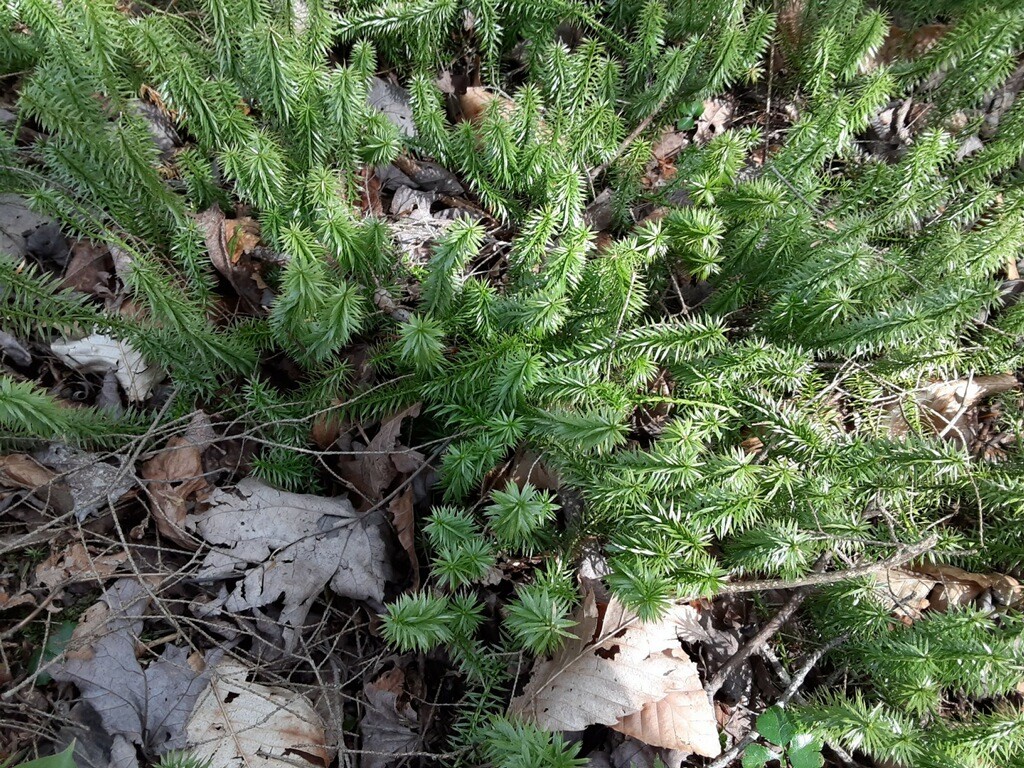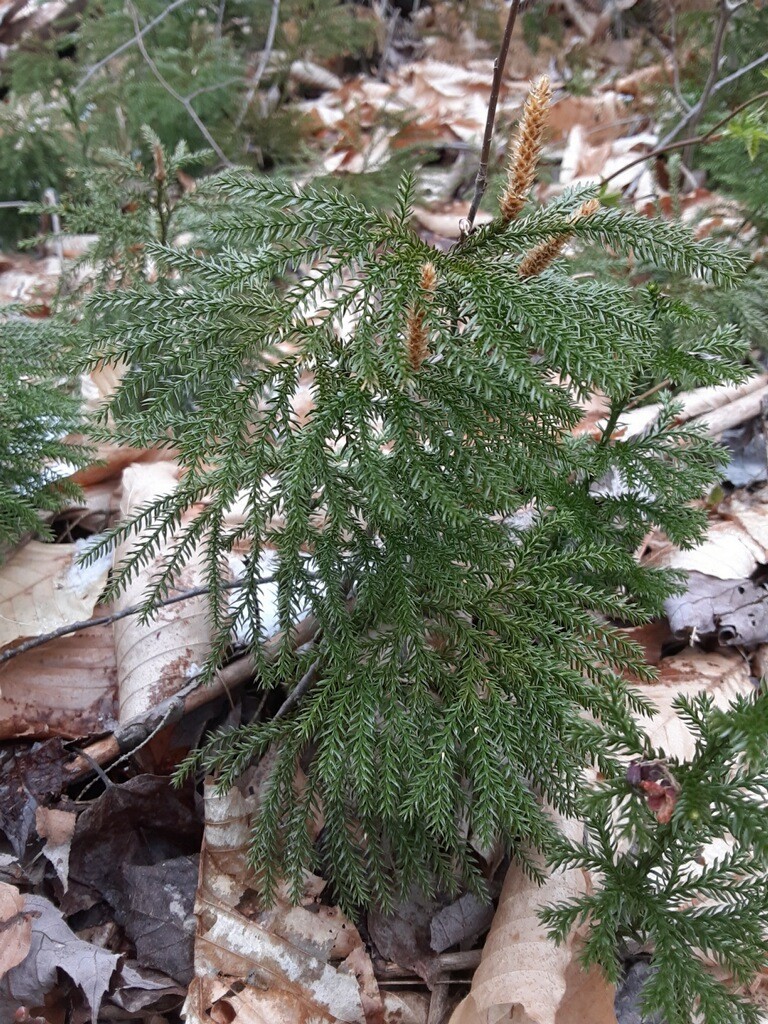By Susan Sprout
Quite often while hiking in the woods, I will find clubmoss popping up out of piles of leaves or snow. I have always liked the Lycopodiaceae Family, especially the Lyco part; perhaps I feel a sympatico connection with the name, as an old Lyco graduate. My first introduction to clubmosses came during a botany class field trip. It was the beginning of a beautiful relationship with all things “plantly.”
Plants in the Clubmoss family originated during the Early Devonian Period about 380 million years ago and reached their peak during the Carboniferous, growing to one hundred feet in height and three feet in diameter. Their fossil remains, well, remain here in PA, above or below or mixed in the coal seams. Today, these herbaceous plants rarely grow taller than six inches with their rhizomes creeping above or just below the leaf litter. They are NOT mosses, but a step above because they have a vascular system with xylem and phloem which transports nutrients, water and photosynthesized food throughout.

Princess Pine (Dendrolycopodium obscurum) may have received its common name because the small plants look like immature trees with shiny needle-like leaves growing tightly to their branches. They put up an amazing yellowish-tan fertile shoot called a strombile that holds spores, and then you know it is not a baby tree! It may take up to twenty years for a new plant to grow from a released spore whose size is only 0.0013 inches. Thankfully, they can also spread by their underground runners. Repeatedly walking near the plants can compact the soil and damage or kill new plants beginning to grow underground. It can even keep the spores from germinating.
Another clubmoss found in our area is Common Running Clubmoss or Ground Pine (Lycopodium clavatum). Their horizontal stems run almost on top of the ground, covered by leaves or other small plants. Tiny green leaves are spirally arranged on the stems and shoots, giving them a rather furry look. Each leaf will have a single, unbranched vein in it that runs almost its entire length. Their fertile shoots start thinner at the bottom and widen as they ascend, giving them that classical club shape for which clubmosses are named.

The dry spores of clubmosses have had many uses, from treatment for wounds and nosebleeds to powder for chafed skin. They have been utilized in a study to test the behavior of aerosol-released biological agents, in fingerprint powder, pill coverings, and as an ice cream stabilizer! When mixed with air, the spores are highly flammable which made them useful as photographic flash powder in the past. It is still used for theatrical special effects in plays and magic shows. People have been pulling large amounts of the thirteen different kinds of clubmosses growing in PA out of the ground for years to make Christmas decorations like wreaths and garlands.
“Shazam! Poof! They are disappearing.”


